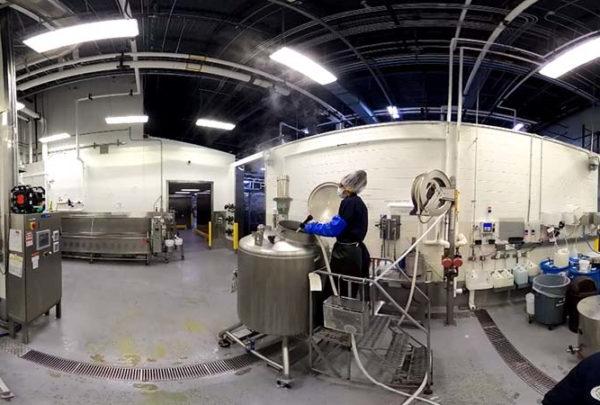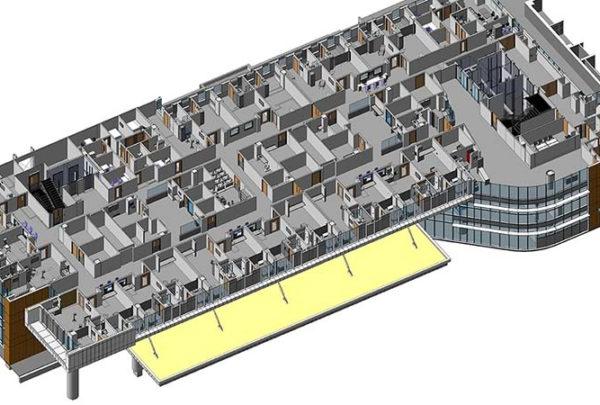Often, the value of an architect is measured by a flashy edifice, a well-thought-out plan, or a functional sequence of movement for goods/services throughout a facility. Wrestling with construction science and specification of proper materials is, however, a huge component to the collective value an architect provides a client. In this blog I’ll spotlight one such opportunity and encourage you to ask, “Is my architect on top of that?”

After the horror of the 72 deaths in the Grenfell Tower fire in London on June 14, 2017, there is a renewed focus on NFPA 285 and the combustibility of facades. Architects are paying more attention to the detailing and materials in the building skin. Your architect needs to understand when NFPA 285 is applicable and exactly what NFPA 285 requires. The most important part of that understanding is the loophole that exists in NFPA 285.
During the energy crisis in the 1970s, manufacturers of plastics saw an opportunity in the construction market and positioned to get more foam insulation in exterior wall construction. Foam insulation has a higher insulating value per inch than fiberglass batts or mineral wool, it is lightweight and dimensionally stable, it is waterproof, and it doesn’t itch when it gets under your shirt. All fantastic qualities that virtually guaranteed them a sizable chunk of construction dollars within the market. There was just one little problem: Foam insulation burns.
It’s combustible, and the fumes released when it burns are highly toxic. Under certain conditions, burning foam may liquify and become an oozing magma that drips from the heads of windows and doors, possibly onto occupants escaping the building or first responders trying to get in. These issues make foam insulation a non-starter in non-combustible construction.
To get into the market, the Society of the Plastics Industry (SPI) negotiated a solution with the building code and fire officials. Foam insulation would be permitted in non-combustible construction if the SPI could prove their products didn’t significantly add to flames spreading across an exterior wall either vertically or horizontally. And in 1988, the SPI succeeded in creating the test that would evolve in 1998 to become NFPA 285. Victory … sort of.
NFPA 285 is a burn test. A two-story sample wall assembly 17 feet high by 13 feet wide with a 6-foot-wide window “opening” in the lower story is constructed. There is never a “window” in the opening, and that is critical to remember. The testing facility places a fire source inside the lower story behind the wall and a bar of gas jets in the window opening, lights the gas, and cranks up the heat for 35 minutes. Then the gas is shut off and the wall is examined. The trick to passing the test is not to burn too much. It’s best if you don’t burn at all, but burning a little is still passing.
That’s a super-simplified description of a very stringent and detailed test. The actual document is titled “Standard Fire Test Method for Evaluation of Fire Propagation Characteristics of Exterior Wall Assemblies Containing Combustible Components.” It’s 27 pages filled with specific criteria the proposed wall assembly must meet, the physical requirements of the testing facility, and the procedures the testing facility must follow. It is careful in its language and precisely organized step-by-step. Unfortunately, the procedure has a big loophole in it that architects must understand.
The window opening I mentioned previously? It is the weakest point of the wall assembly. If the assembly is going to fail, it’s going to happen at the head of the opening. The fire jets at the head of the opening are within 9 inches of the wall cavity. The flame from the window jets engulfs the window head and lick up the wall. The window burner puts out up to 22,000 BTUs per minute. The combined room burner and window burner together generate up to 74,000 BTUs. I can’t give you a specific reference for how hot that is, but it’s a lot of hot. Now, the test requirements allow only a 1mm thick piece of aluminum flashing to cover the cavity around the window opening and protect the cavity from the flame (refer to section 5.7.3.1 of NFPA 285). The test is specific on width, shape, fastener locations, and edges of that flashing. Nothing else can protect the cavity. You can imagine how insignificant 1 mm of aluminum protection is against 35 minutes of up to 22,000 BTUs per minute firing into the head of that opening. And that 1 mm aluminum flashing is all the test allows.
Except paragraph 5.7.3.3 states, “As an option to 5.7.3.1, the window opening construction used in the test shall represent construction details provided by the client and installed per the manufacturer’s instructions.” Welcome to the test, Mr. Loophole. This paragraph allows the manufacturer to create any type of closure detail to protect the cavity. Things like gypsum, thicker metal, steel instead of aluminum, and mineral wool can all be placed across the opening and stuffed into the cavity. Remember, there is no window installed in the opening. There is nothing to interrupt this protective barrier being placed across the cavity. Since the sample wall does not have to consider moisture intrusion, rain, air penetration, or drainage – all things an architect must detail in construction documents, and a contractor must be able to install – the barrier at the head can focus on only protecting the cavity. For many wall assemblies, this closure barrier across the cavity is what truly allows the assembly to pass the test.
NFPA 285 is a very stringent and detailed test. It describes everything the manufacturer must provide for the design of the wall, as well as what the testing facility must provide in the final report. There are two paragraphs in NFPA 285 that require the window opening to be described. Paragraph 5.7.3.4 states the drawings and descriptions of the proposed window opening shall be included in the final test report. Paragraph 11.1.1.b requires “Drawings and description of the construction used in the test around the window opening header, jambs, and sills, including the type and thickness of the closure material around the perimeter of the opening; the fastening detail, including type, size, and spacing of fasteners around the perimeter of the window opening; and the type, thickness, and density of any insulation or blocking used internal to the window opening closure” to be included in the report. Simply put, the report shall clearly describe exactly how the opening was constructed. The report will let you know if the loophole was taken, and what was installed to protect the foam insulation.
Have you ever asked a manufacturer for a product’s NFPA 285 test report, specifically the construction at the head of the window opening? 澳门足彩app consistently requests the drawings and material descriptions as stipulated by paragraphs 5.7.3.4 and 11.1.1.b but has historically had very little success in obtaining it. We stand on principles and understand manufacturers protecting their intellectual property. We have signed non-disclosure agreements with manufacturers and issued proprietary specifications when necessary to receive the information needed to understand the window opening.
There are many manufacturers with multiple foam insulation products on the market. They have all done NFPA 285 testing. It’s important for your architect to obtain the testing data and cautiously evaluate it to confirm it meets code, the design intent, and can be constructed. We believe this of value to a client – and paramount to everyone’s safety.







































































































